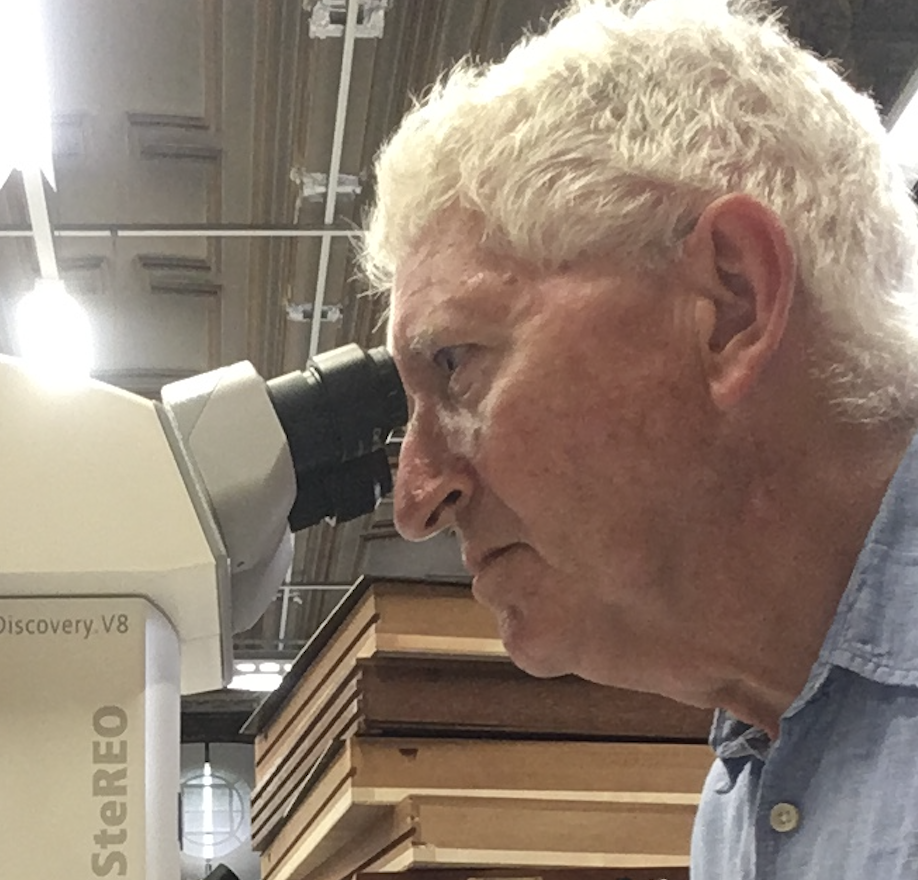In the summer months, listen out for the gentle rattle of dragonfly wings darting across the reeds and rushes as you take a lakeside stroll. These large colourful insects are both brazen and yet also flighty so you may only catch a fleeting glimpse.
Dragonflies and damselflies all have superb all-round vision for hunting their flying insect prey, but are easily spooked – stand motionless and you will often see them return to the same stem perch or resume their regular patrol up and down the hedgerow, river or stream bank.
Our expert guide explains how to identify Britain's dragonflies and damselflies, the difference between the species and the best places to see them in flight.
Learn more about other fascinating summer wildlife species, including butterflies, key pollinators of summer and how you can encourage more species to your garden by turning it into a wildlife haven.
Common dragonfly species
Emperor dragonfly (Anax imperator)
Species: Dragonfly
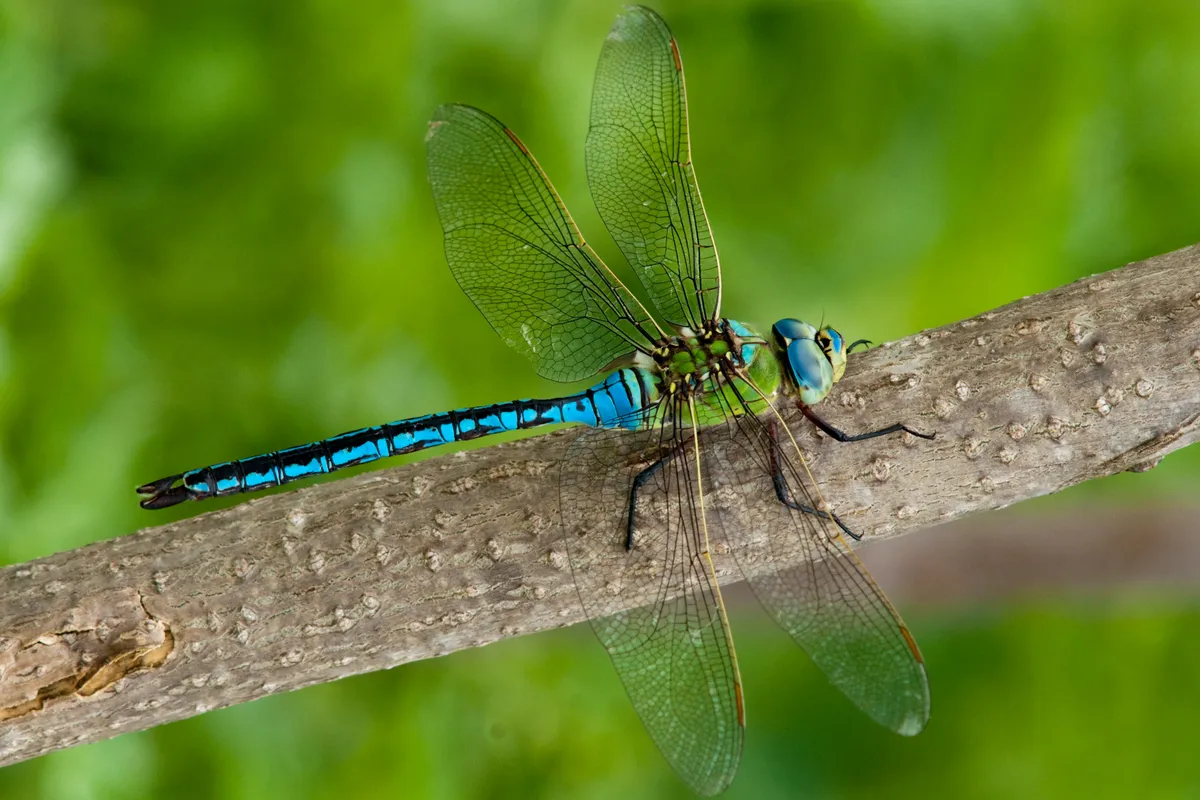
Britain’s largest species of dragonfly measures up to 78mm, and is a brightly coloured with an apple-green thorax and a continuous blue stripe along tail if male or green stripe if female. Very active, it flies with its tail slightly held down and rarely settles except in cool weather. Found across England and Wales, scattered in Scotland.
Southern hawker (Aeshna cyanea)
Species: Dragonfly
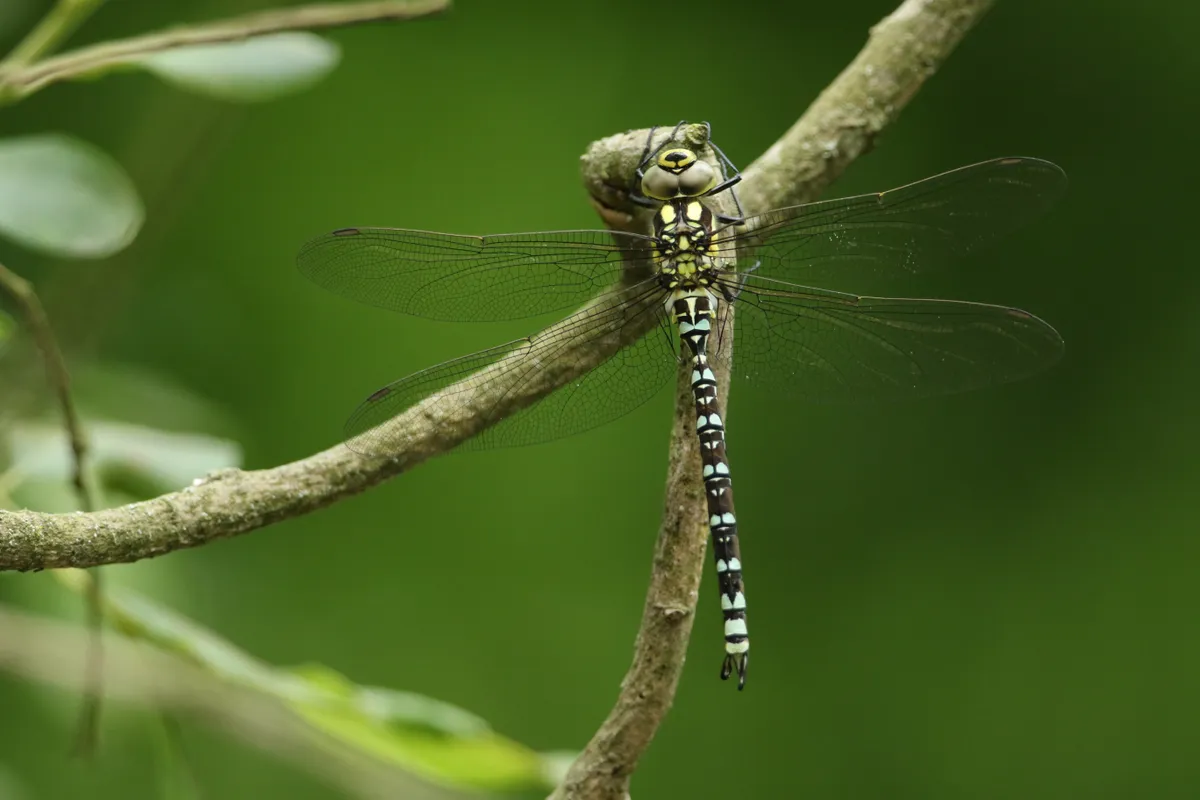
Large (length to 70mm) and brightly coloured, the Southern hawker dragonfly has broad green bars on its sides and thorax, and a distinctive pale golf-tee mark on its first tail segment. The male is dark with apple-green or blue dots down its body; the female is browner with green marks. Common throughout lowland Britain.
Brown hawker (Aeshna grandis)
Species: Dragonfly
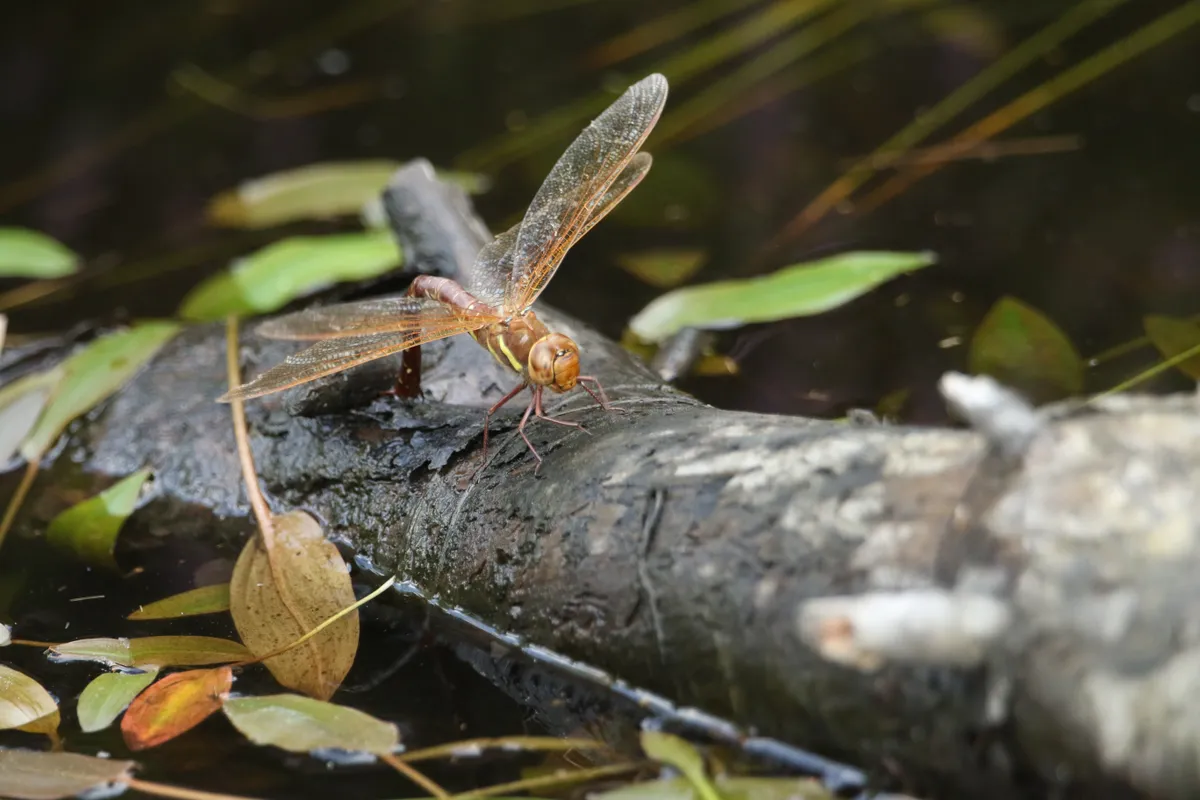
The brown hawker dragonfly can have a length up to 73mm and has dark, smokey-brown wings, visible even from afar across open water. It usually breeds in large lakes, but will fly many miles from water to hawk up and down woodland edges, rides and hedges. Common in England, it is scattered in Scotland, Wales and Ireland.
Broad-bodied chaser (Libellula depressa)
Species: Dragonfly
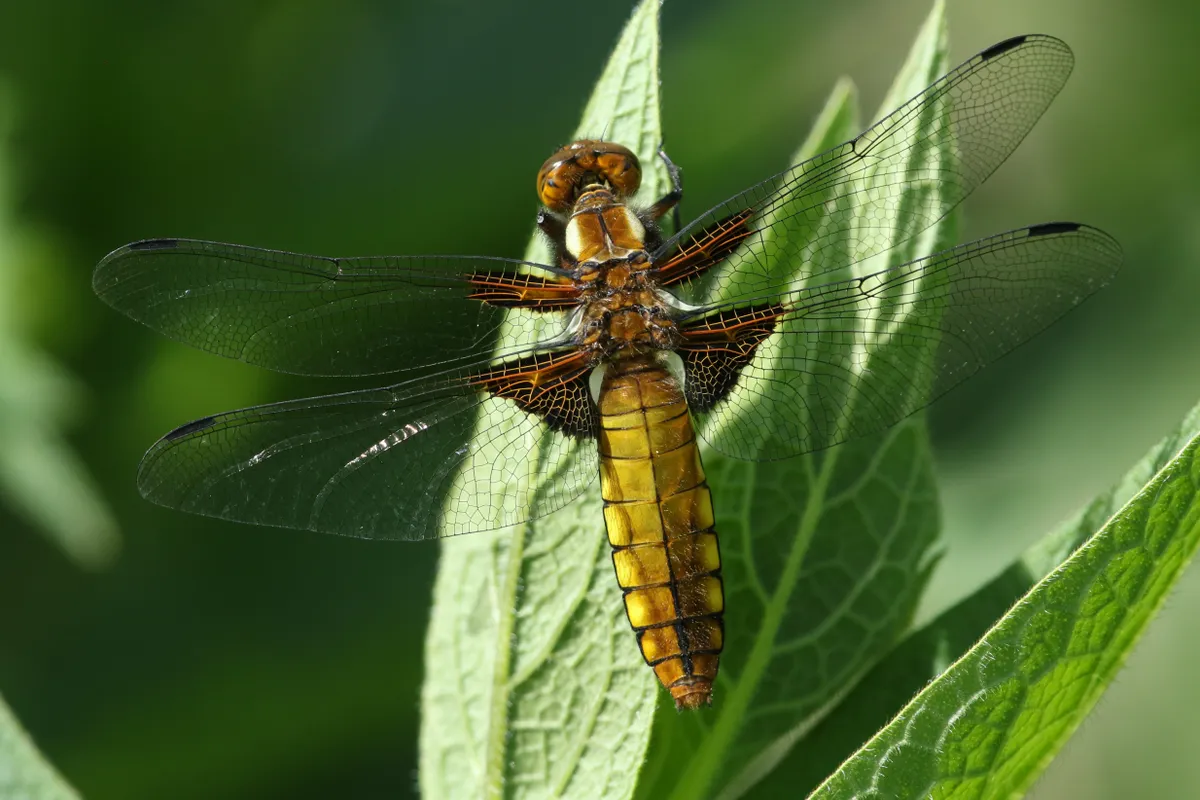
Medium-sized (length to 48mm) but highly distinctive, the broad-bodied chaser has dark wing bases and a broad, flattened body – powdery blue in male, brown in female – edged with yellow spots. Common in gardens, it breeds in streams, ponds, ditches and lakes. Found across England and Wales, with inroads into southern Scotland.
Common darter (Sympetrum striolatum)
Species: Dragonfly
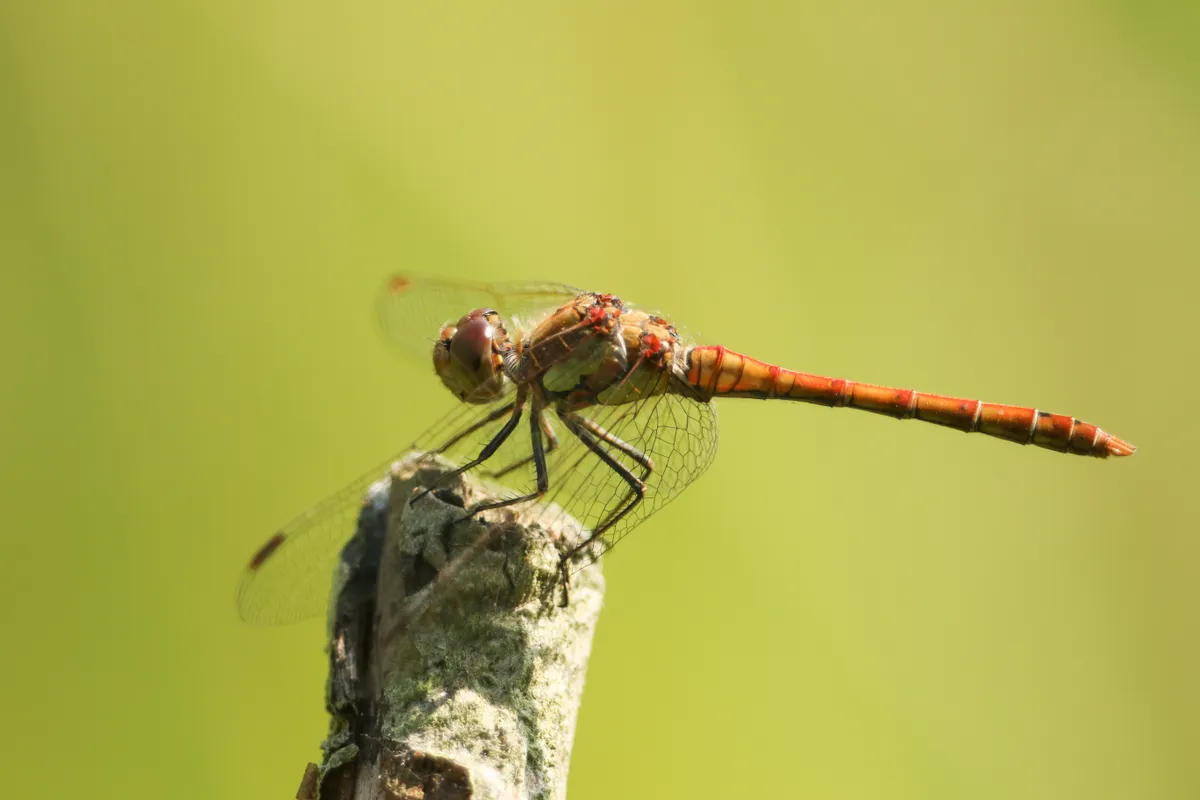
Medium size (to 43mm), the common darter has a narrow body – red in male, brightening for days after emerging; brown or straw-yellow in female. It sometimes perches with its tail up in the air. Often the last species to be seen, well into November, it is found in all water bodies across Britain except the highest Highlands.
Banded demoiselle (Calopteryx splendens)
Species: Dragonfly
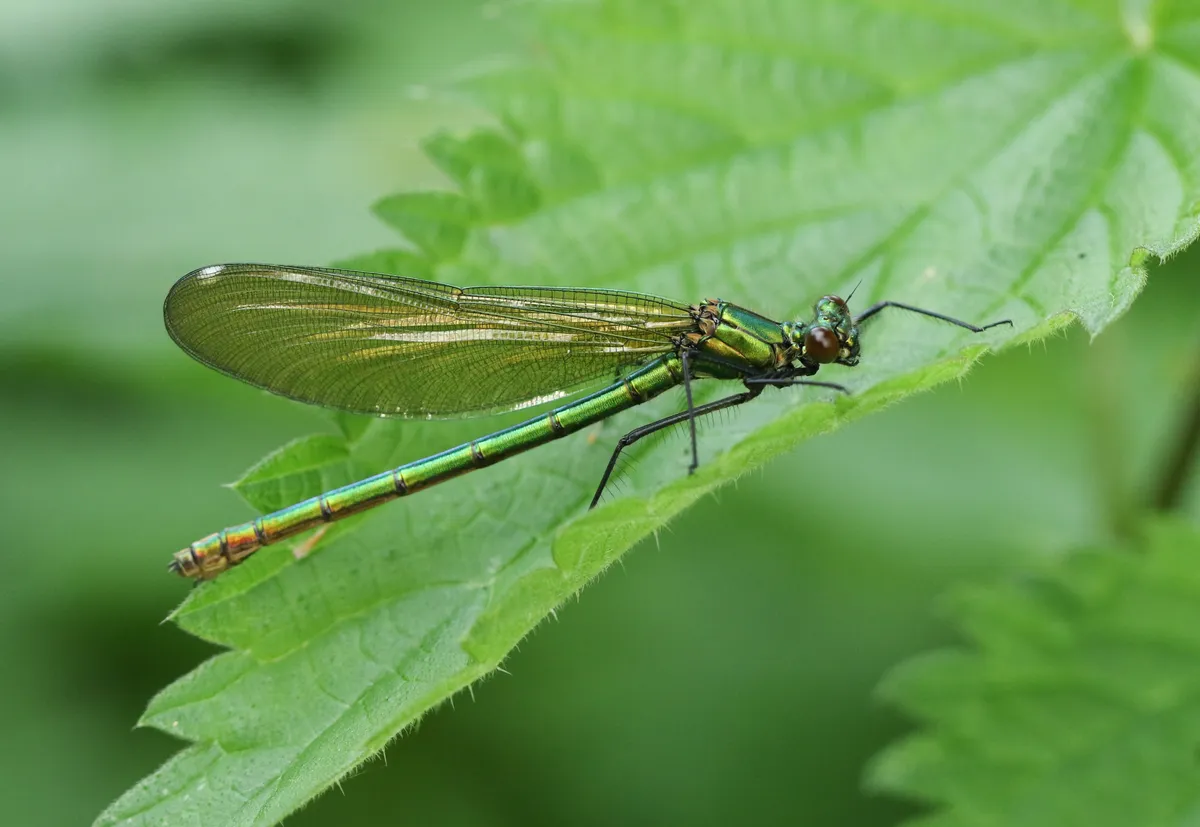
Medium (length to 45mm), this demoiselle has a fragile, narrow body, emphasised by its gentle fluttering flight. Metallic bluish body in male, green in female, it often settles on waterside vegetation along slow muddy-bottomed streams. It is found in England and Wales, scattered in Scotland and Ireland.
Damselfly species
Species: Damselfly
Blue-tailed damselfly (Ischnura elegans)
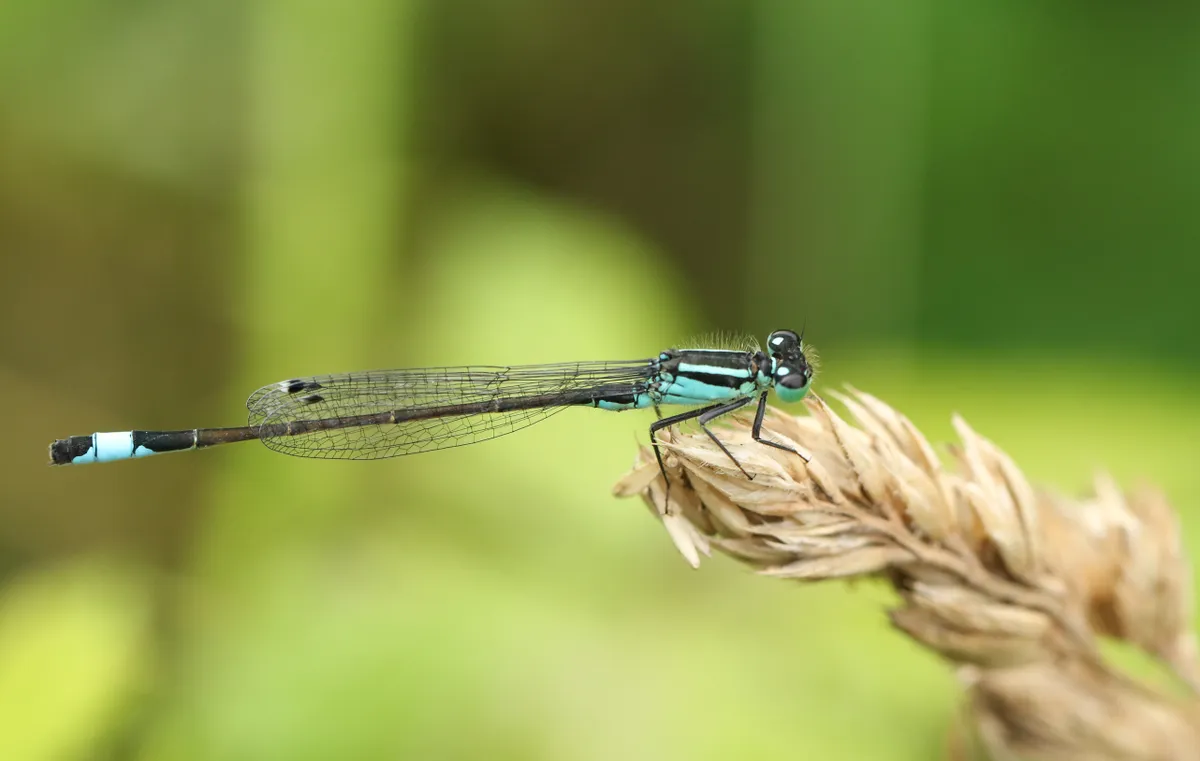
Small (length to 31mm), narrow, fragile and delicate, this pretty damselfly flies secretively through waterside vegetation. It is black with a pale blue thorax and bar across its tail tip, while its pterostigma (lone wing-tip spot) is two-coloured on front wings. Found in any water body throughout Britain, scattered in Ireland.
Large red damselfly (Pyrrhosoma nymphula)
Species: Damselfly
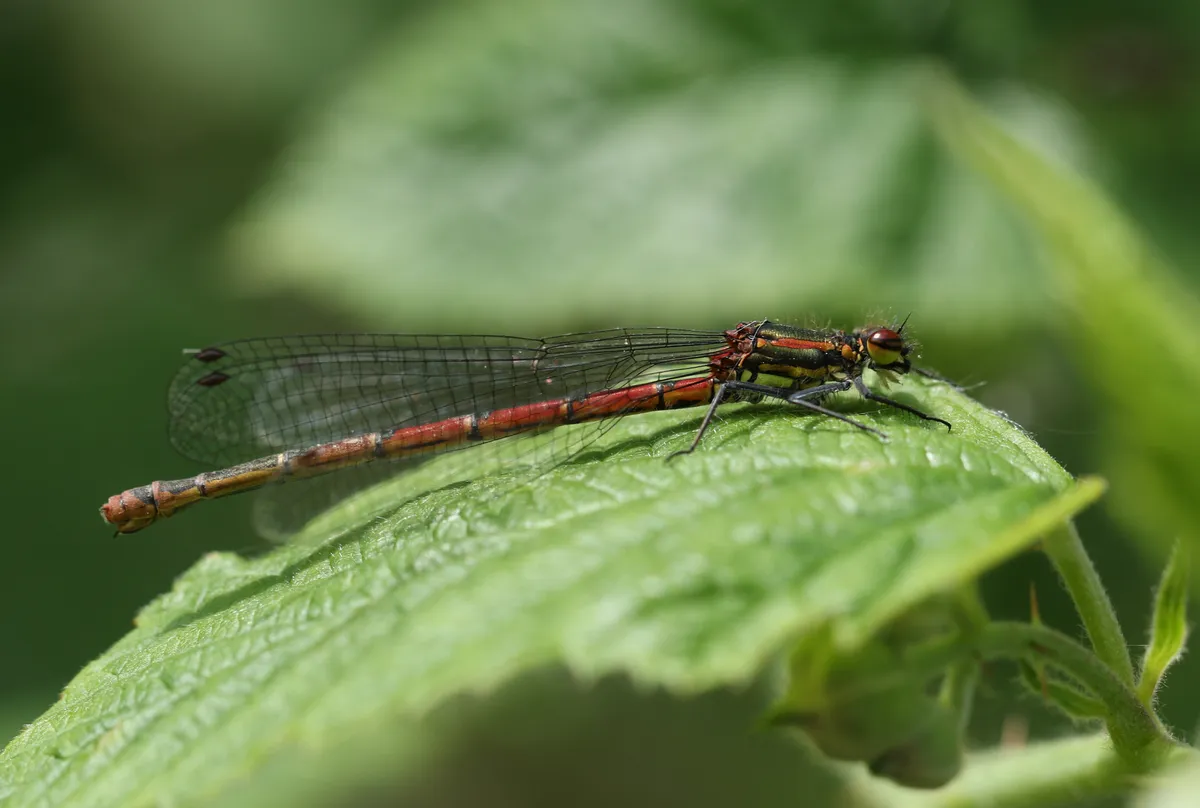
This small damselfly (length to 36mm) is bright red with black wing-spots. The male’s abdomen is all red; the female’s is barred lighter or heavier with black. It is often found in large numbers around water bodies, including ponds, meadowland dykes and peat bogs. It is perhaps the most widespread species in Britain.
